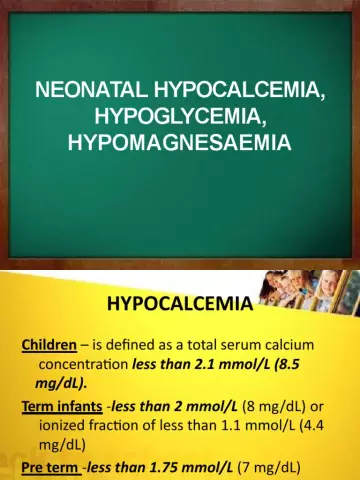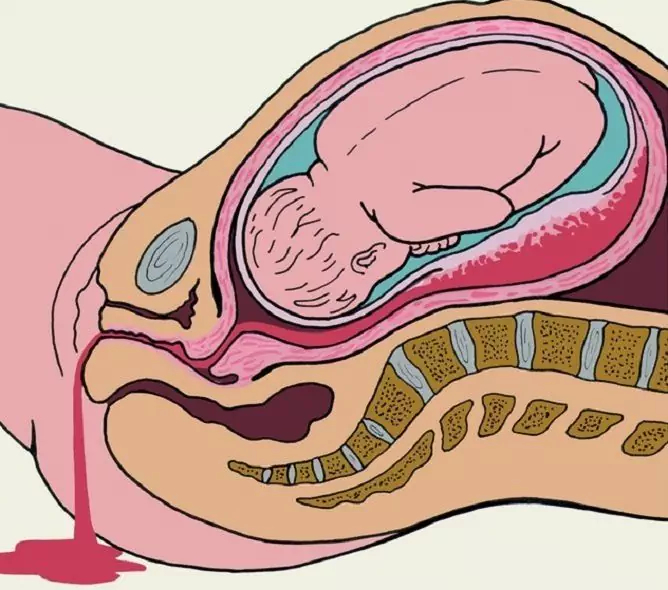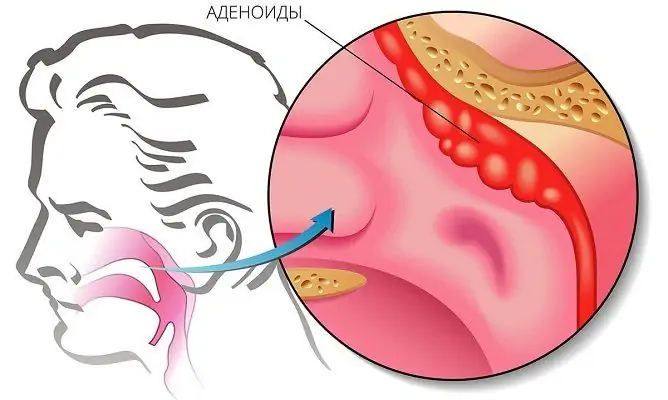- Author Rachel Wainwright [email protected].
- Public 2023-12-15 07:39.
- Last modified 2025-11-02 20:14.
Glycemia

The term "glycemia" was coined in the 19th century by the French physiologist Claude Bernard to refer to a measure of blood sugar.
The glycemic level can be different: normal, low or high. Normally, the concentration of glucose in the blood is 3.5-5.5 mmol / l, and the stability of this indicator is important, since, otherwise, the brain and the entire body as a whole cannot function in the correct mode.
If the sugar is low, they talk about the so-called hypoglycemia, and when its level is above the norm - about hyperglycemia. Both conditions are dangerous: if you go beyond the critical marks, a person can lose consciousness and even fall into a coma.
Glycemic symptoms
At a normal concentration of glucose in the blood, glycemic symptoms do not appear, since the body is working well and coping with stress. In cases where the norm is violated, a wide variety of manifestations of pathology occur.
If the digits of the permissible value (hyperglycemia) are exceeded, the symptoms of glycemia are as follows:
- Intense thirst;
- Itchy skin;
- Frequent urination
- Irritability;
- Fast fatiguability;
- Loss of consciousness and coma (in severe cases).
The state of hyperglycemia is characteristic primarily of patients with diabetes mellitus. In such patients, due to the absence or deficiency of their own insulin, after a meal, blood sugar rises (postprandial glycemia).
Certain changes in the functioning of the whole organism also occur during hypoglycemia. It is worth noting that sometimes this condition is characteristic of perfectly healthy people, for example, with great physical exertion or a very strict diet, as well as patients with diabetes mellitus, if the dose of insulin is incorrectly selected or an overdose of antidiabetic drugs occurs.
In this case, the symptoms of glycemia are as follows:
- Intense hunger;
- Dizziness and general weakness;
- Nausea;
- Impaired coordination of movements;
- Coma or loss of consciousness (in extreme cases).
Determination of the level of glycemia
To determine the level of glycemia, two main methods are used:
- Measurement of sugar by blood test;
- Glucose Tolerance Test.
The first detected indicator is impaired fasting glycemia, which does not always indicate a disease. This is a fairly common method, which consists in determining the concentration of glucose in capillary blood (from the finger) after fasting for eight hours (usually in the morning after sleep).
Impaired fasting glycemia, or IFN, is a condition in which fasting plasma (or blood) sugar exceeds normal levels but is below the threshold, which is a diagnostic sign of diabetes. The indicator of 6.2 mmol / l is considered borderline.
You should know that in order to confirm predictions and make an accurate diagnosis, it is necessary to conduct a study at least twice, and preferably on different days, in order to avoid situational errors. For the reliability of the test results, it is important not to take drugs that affect the hormonal background.
To clarify the condition, in addition to identifying the level of fasting glycemia, it is important to conduct a second additional study: a glucose tolerance test. The procedure for this test is as follows:
- A standard fasting blood test;
- Patient intake of 75 g of glucose (usually in the form of an aqueous solution);
- Repeated blood sampling and analysis two hours after oral loading.
The obtained figures up to 7.8 mmol / l are considered normal, if they reach 10.3 mmol / l, it is advisable to undergo additional examination. A sign of diabetes mellitus is exceeding the limit of 10.3 mmol / l.
Glycemia treatment
In case of violation of glycemia, treatment is prescribed by a doctor, however, lifestyle adjustment is the basis of all therapeutic effects. Sometimes, especially in severe cases, medications are used.

The most important thing in treating glycemia is diet. Patients with diabetes should pay special attention to the glycemic index of foods and consume only those that are characterized by a low index. As in the case of hyperglycemia, and in the state of hypoglycemia, one should adhere to fractional nutrition, that is, eat often, but little by little. The diet should contain complex carbohydrates that are absorbed for a long time and provide the body with energy for a long time. "Bad" carbohydrates, especially sugar and white flour products, are recommended to be excluded from the menu completely. Proteins in food should be in sufficient quantities, but fats should be limited.
An equally important point in the treatment of glycemia is physical activity and the accompanying weight loss. Recent large-scale studies in the United States, China, and Finland have suggested that even moderate weight loss and just a 30-minute daily walk can cut the risk of diabetes by more than half.
Often, signs of glycemia do not appear or are associated with other diseases, showing up at random. In this situation, even if the patient feels subjectively well, it is impossible to refuse treatment.
It is worth noting that sometimes glycemia is due to heredity, therefore, persons with a predisposition to endocrine diseases are recommended to regularly donate blood for analysis.
YouTube video related to the article:
The information is generalized and provided for informational purposes only. At the first sign of illness, see your doctor. Self-medication is hazardous to health!






